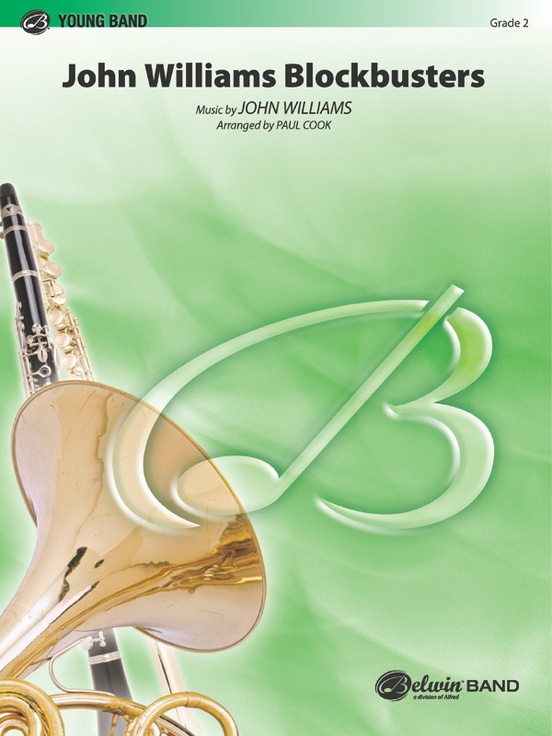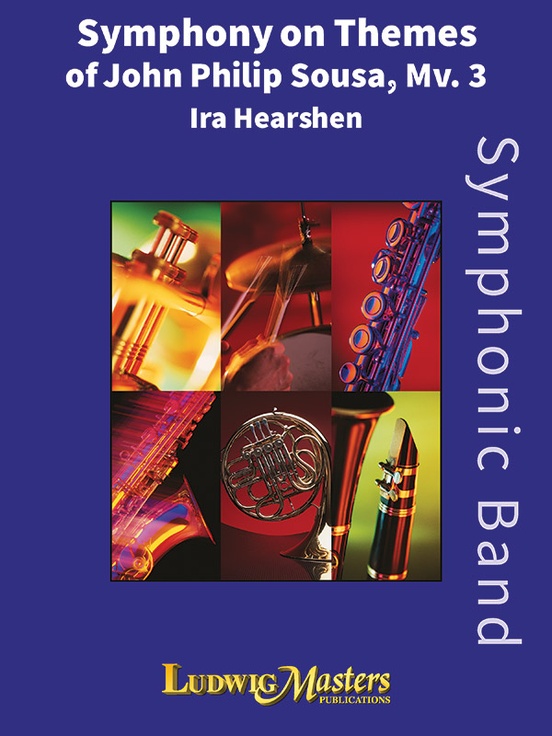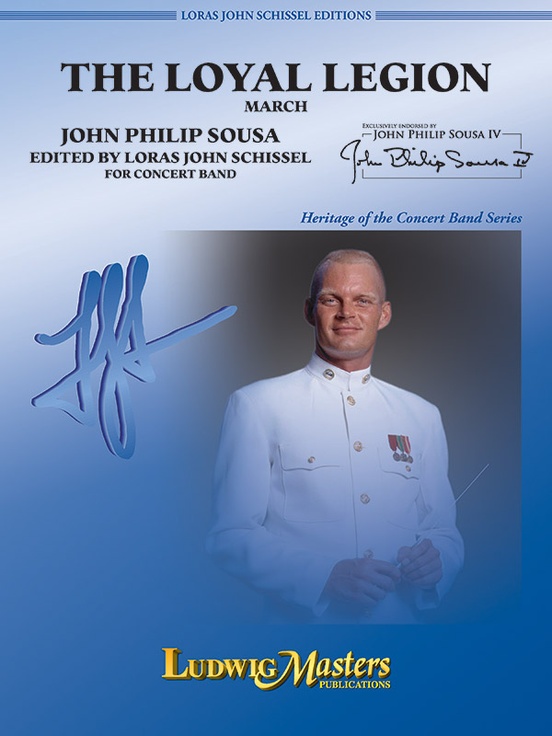Results
-
 £66.95
£66.95John Williams Blockbusters
Three of John Williams' most acclaimed film scores, , and , are combined to create this vivid medley for young band. Very playable and dynamic. Bring your popcorn and enjoy the show! (3:45)
Estimated dispatch 3-5 working days
Audio Player -
 £79.50
£79.50Symphony on Themes of John Philip Sousa, Mvt. 3 after "Fairest of the Fair" - Ira Hearshen
Hearshen's ingenious treatments of Sousa themes in symphonic form continues with the third movement, based on Fairest of the Fair. Presented as a light, scherzo-like movement, there is quick interplay between many voices, key changes, and fresh rhythmic figures. It is pure delight to play this separately or as part of the magnum opus that is the entire Symphony on Themes of John Philip Sousa.
Estimated dispatch 3-5 working days
-
 £225.00
£225.00Five Orchestral Meditations (Concert Band - Score and Parts) - Rutter, John - Noble, Paul
The Five Orchestral Meditations are all based on John Rutter's choral pieces, which he re-scored for orchestra, and on which these arrangements are based. They are offered as a suite, but the audio tracks have been separated to make it easier to hear each title. These lovely pieces will present a perfect exercise for band blending, balance, interpretation, intonation, and finesse, while offering your audience some of the typically gorgeous music for which John Rutter is so noted. They may be performed as a suite, or as independent pieces: 1. What Sweeter Music; 2. Blow, blow, thou winter wind; 3. Candlelight; 4. Lord, make me an instrument of thy peace; 5. The Lord bless you and keep you. John Rutter's compositions are in a class by themselves, and this adaptation is sure to find its way into the repertoire of outstanding bands around the world.
Estimated dispatch 7-14 working days
Audio Player -
 £106.99
£106.99Music (Concert Band - Score and Parts) - Miles, John - Sparke, Philip
Born in Jarrow, northeast England, in 1949, John Miles was something of a child prodigy, learning the piano from the age of five. In the early '60s he persuaded his father to buy him a guitar and by the end of the decade he had joined a semi-professional band, The Influence. The group soon disbanded and by 1969 Miles was recording with his own group, The John Miles Band, releasing a dozen singles in the early '70s. In 1975 Miles decided to move to London and secured a deal with Decca Records. By October that year, a newly formed band, John Miles and Co, had released their debut single, Highfly, but their greatest hit, which stormed the British charts in March 1976, was Music.Duration: 6.00
Estimated dispatch 7-14 working days
Audio Player -
 £84.50
£84.50Superman (Suite) (Concert Band - Score and Parts) - Williams, John - Lowden, Bob
When great movie music is the topic, one name comes to the minds of most of us: John Williams. This towering score, as arranged for your concert band by Bob Lowden, contains all of the famous John Williams musical trademarks -- drama, power, and massive sound blocks. The medley contains: "Theme from Superman" * "The Planet Krypton" * "The March of the Villians" and "Finale." Here is John Williams at his finest! Duration: 6.45
Estimated dispatch 7-14 working days
-
 £58.50
£58.50The Loyal Legion March - John Philip Sousa / arr. Loras John Schissel
Enjoyable and very playable, this stellar march is yet another example of Sousa's complete mastery of the style. "The Loyal Legion" was written to commemorate the twenty-fifth anniversary of the Military Order of the Loyal Legion of the United States, an organization composed primarily of American Civil War officers and their descendants. The anniversary celebration was held in Philadelphia on April 15 and 16, 1890, and the U.S. Marine Band was ordered by the Secretary of the Navy to participate. The march was originally an entr'acte to the Sousa opera "The Queen of Hearts," composed in 1885. The work is now available in a superb edition by Sousa scholar Loras John Schissel, which is exclusively endorsed by John Philip Sousa IV.
Estimated dispatch 3-5 working days
-
£29.95
God So Loved the World - Score and Parts - Sir John Stainer
The Crucifixion, an oratorio composed by John Stainer in 1887 was designed in such a way that most church choirs would find it accessible. Also, it helpfully includes five hymns so that the congregation can contribute also. Whilst the text for this work was written by W J Sparrow Simpson, who worked with Stainer in an earlier work entitled 'Mary Magdalene', that used in this setting of 'God, so loved the world' is literal from John 3 verse 16 in the scriptures. This movement of 'The Crucifixion' is the most popular and widely used.
Estimated dispatch 7-14 working days
-
£5.95
God So Loved the World - Score only - Sir John Stainer
The Crucifixion, an oratorio composed by John Stainer in 1887 was designed in such a way that most church choirs would find it accessible. Also, it helpfully includes five hymns so that the congregation can contribute also. Whilst the text for this work was written by W J Sparrow Simpson, who worked with Stainer in an earlier work entitled 'Mary Magdalene', that used in this setting of 'God, so loved the world' is literal from John 3 verse 16 in the scriptures. This movement of 'The Crucifixion' is the most popular and widely used.
Estimated dispatch 7-14 working days
-
 £79.99
£79.99How To Train Your Dragon: The Hidden World - John Powell
The third and final installment of the popular How to Train Your Dragon movie franchise again features an outstanding score by John Powell. The Hidden World uses a hint of the familiar earlier themes along with bold and dramaticnew material. Based primarily on John Powell's own concert suite, here is a well-paced and effective medley for band.
Estimated dispatch 7-14 working days
-
£61.95
Belligerence - John M. Pasternak
Belligerence, by Carl Fischer Music newcomer John Pasternak, features strong rhythmic content, a memorable melodic figure, and dramatic percussion that is still within reach of beginning students. John drew on his own experience as a music educator to provide students with music they will love to play over and over.
Estimated dispatch 7-14 working days
